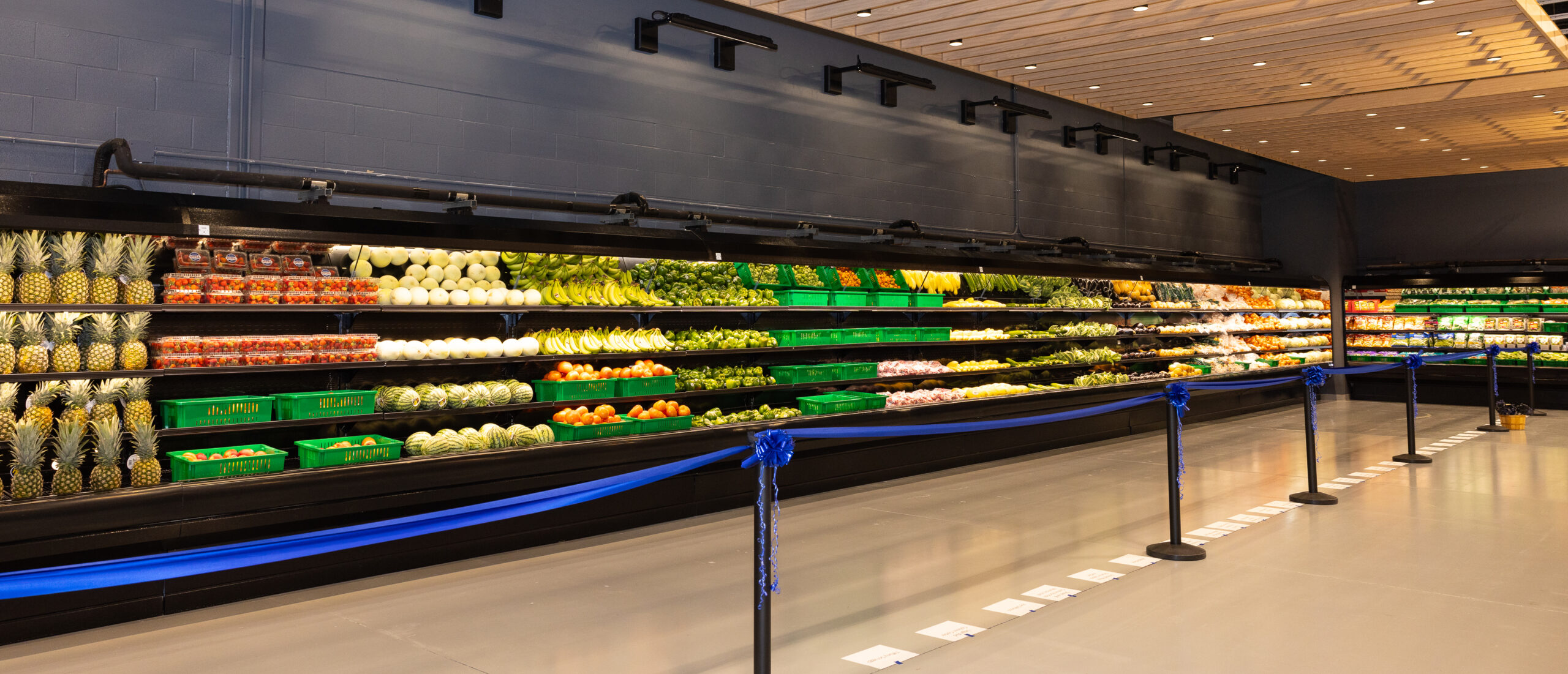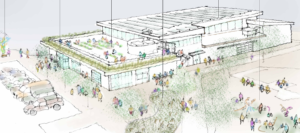Offering wraparound social services alongside free food has long been viewed as a desirable practice among food banks and pantries. Now, Greater Cleveland Food Bank has raised the bar on how it can be done.
Its Community Resource Center, opened earlier this month, provides permanent space to 15 other nonprofit social service agencies in a modern, upscale setting, making it easy for clients to access multiple types of services all in one trip. In addition to getting food from a grocery-store style pantry, clients can also get help with housing, employment, healthcare, legal and other services.

“In the long run, what we want to do is reduce hunger because we’ve been able to connect our neighbors to other services,” said Kristin Warzocha, President and CEO of Greater Cleveland Food Bank.
The food bank’s approach is not entirely novel. One doesn’t even have to look beyond Ohio to see other examples of food banks combining food distribution with access to other social services. For a few years now, for example, Mid-Ohio Food Collective has been pairing social services with free, healthy food at its Mid-Ohio Markets, which now number eight. Akron-Canton Regional Food Bank has been doing the same at its Stark County Campus, and soon will extend the concept to its main distribution site.
But Greater Cleveland Food Bank gets credit for establishing permanent satellite offices for all of its community partners within its facility, rather than temporary tables at certain times. The renovated facility includes an examination room manned by a health clinic, for example. Two community partners – a diaper bank and a clothing/shoe store for kids – are moving their headquarters and distribution operations to the new facility. In addition to a computer lab operated by a local community college, there is a playroom run by a school readiness nonprofit for kids to wait in while their adults access services (see photo). The entire center including the food market is open for extended hours during the week, as well as every other Saturday.
[Some food pantries are also moving to this model. See our story here.]
Warzocha credits the food bank’s deep experience in community outreach as part of the inspiration for the resource center. For more than ten years, the food bank has been operating a large call center, now operating Monday through Friday from 9 am to 4 pm, to help people apply over the phone to SNAP, Medicaid and other benefits. It receives hundreds of calls daily.
In addition to the call center, there is a team of outreach workers who travel to partner agencies and other community sites to connect people to benefits. Between the call center and the roving team, more than 20 employees are tasked with outreach. Explained Warzocha, “We’ve been doing this work to connect people to other nonprofit partners as well as benefits for a number of years now.”
The Community Resource Center is part of an overall strategic plan to expand capacity. While the food bank already serves 400,000 people through its network of 1,000 agencies, it knows that 550,000 people in its service area are income-eligible for food. “That’s a pretty big gap,” Warzocha noted.

The resource center, an upgrade of the food bank’s original warehouse, is part of a three-phase $80 million project that also includes the opening of a new distribution center last year and the upcoming creation of at least two smaller resource centers. The food bank spent $13 million to renovate and upgrade its old warehouse into the new community center.
Greater Cleveland Food Bank recruited partners for its resource center for well over a year, with some taking longer to sign on than others. “No one that we identified that we thought would be critical has said no,” Warzocha noted. Partners pay rent per square foot, which is highly subsidized by the food bank through fundraising. The food bank also takes care of all other costs, like a receptionist for the welcome area, utilities and cleaning.
The food bank will track the outcomes of referrals using software from Unite Us, which some of its community partners already use. The plan is to monitor clients along their journey via quick text surveys and other methods of communication to track their progress.
Greater Cleveland knows from its long work with community outreach that there is always another layer to each client’s experience with food insecurity. “We get so many calls in our help center from people who are in need of food for the first time and they have no idea where to start,” Warzocha said. “Oftentimes, it’s because they’ve lost their job, or they’ve been faced with a medical difficulty, or they’re having a housing crisis. There’s always another contributor, and they just don’t know what services are out there. So, the idea is that we’ll have everybody here in one location.” – Chris Costanzo
PHOTO, TOP: The grocery-store style food pantry at Greater Cleveland Food Bank’s new Community Resource Center.
Like what you’re reading?
Support Food Bank News
This article was made possible by the readers who support Food Bank News, a national, editorially independent, nonprofit media organization. Food Bank News is not funded by any government agencies, nor is it part of a larger association or corporation. Your support helps ensure our continued solutions-oriented coverage of best practices in hunger relief. Thank you!
Connect with Us:










